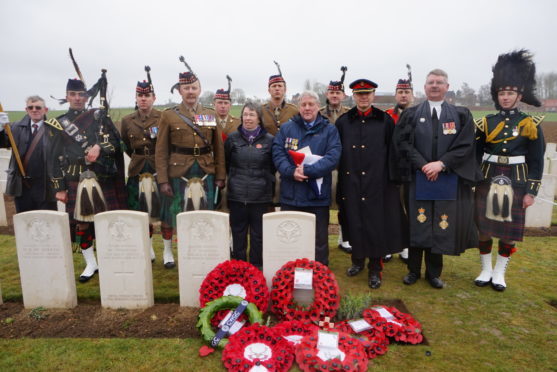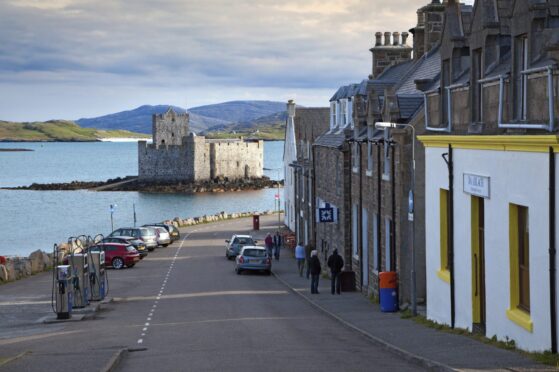The grave of a 21-year-old Highland soldier has finally been marked 100 years after his death in Word War I.
Serjeant John MacKenzie – using the correct spelling of the title for the time at which he served – enlisted with the Seaforth Highlanders at the outset of the war and served throughout the conflict until he died on March 25, 1918, shortly after the start of the German spring offensive.
He fought in the capture of Beaumont Hamel in 1916 and later that year was awarded the Military Medal and French Croix de Guerre. Just prior to his death, he was awarded a Bar to the Military Medal.
But the location of Serjeant MacKenzie’s grave remained a mystery for years before his great nephew Ken MacDonald and his wife Kath embarked on a course of painstaking research. They revealed that he was wounded and taken prisoner by the Germans, later dying of his wounds and buried in a mass grave in the village of Inchy-en-Artois.
After the war, his grave was moved to the Commonwealth War Graves Commission’s (CWGC) Anneux British Cemetery in northern France where he was buried as an “unknown soldier.” His whereabouts unknown, Serjeant MacKenzie was commemorated on the Arras Memorial.
But further research by the MOD’s Joint Casualty and Compassionate Centre (JCCC) corroborated the evidence the family provided and identified the “unknown soldier” grave to be his.
A re-dedication service took place on Tuesday during a poignant ceremony at the Anneux British Cemetery.
Mr MacDonald said: “Since my wife and I visited France 22 years ago and saw John’s name on the Arras Memorial, we have never given up hope of finding his grave.”
Mr MacDonald and his wife were accompanied by his sister, Mary, and four other family members at the service.
Nine members of the Royal Regiment of Scotland were also present.
A new headstone bearing Serjeant MacKenzie’s name has been provided by the CWGC.
Also remembered were Serjeant MacKenzie’s brothers, Donald and Kenneth, both of the 1st Battalion, The Cameron Highlanders who are both still missing on the battlefield of northern France.
Mr MacDonald added: “It feels today like one of my three Great Uncles has come home.”
Rosie Barron of the JCCC, which organised the ceremony, said: “Serjeant MacKenzie stands out as an exceptional soldier even amongst a generation where so many paid the ultimate sacrifice for our freedom.
“It has been an honour to organise this rededication service in his memory and to know that his family’s search for him is now at an end.”
The rededication service for Serjeant MacKenzie took place as part of a series of services organised by the MOD’s JCCC this week.










